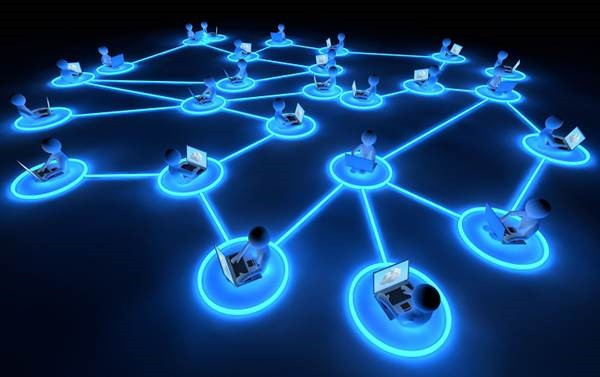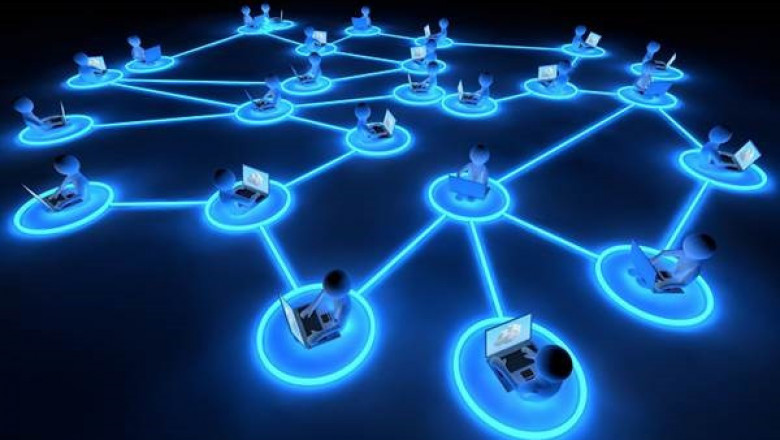views
The IT networking landscape is undergoing a seismic shift, driven by exponential data growth, evolving cyber threats, and the demand for hyperconnectivity. As enterprises embrace cloud-native architectures, IoT ecosystems, and AI-driven operations, networking infrastructure must evolve to support faster, smarter, and more secure communication. This article explores the technologies and trends redefining the future of IT networking, from quantum encryption to self-healing networks.
1. AI and Machine Learning in Network Management
Predictive Network Analytics
AI-powered tools analyze historical traffic patterns to predict congestion, outages, and security threats. Platforms like Cisco ThousandEyes use machine learning to forecast network bottlenecks, enabling preemptive rerouting of data flows. British Telecom reduced downtime by 30% by deploying AI-driven predictive maintenance across its global backbone.
Autonomous Networks
Self-optimizing networks leverage AI to automate configuration, troubleshooting, and load balancing. Juniper’s Mist AI, for instance, autonomously adjusts Wi-Fi channels in real time based on user density, improving throughput by 40% in high-traffic environments like stadiums and airports.
2. 5G and Edge Computing Synergy
Ultra-Low Latency Connectivity
5G’s sub-1ms latency enables real-time applications like autonomous vehicles and remote surgery. Verizon’s 5G Edge with AWS Wavelength processes data locally at edge nodes, reducing latency from 100ms to 10ms for smart factory robots.
Distributed Cloud Networks
Edge computing decentralizes data processing, minimizing reliance on centralized data centers. Microsoft Azure Edge Zones extend cloud services to local carriers, empowering retailers to run AI-driven inventory systems in-store without latency penalties.
3. Quantum Networking: Securing the Future
Quantum Key Distribution (QKD)
Quantum-resistant encryption uses photon-based keys to secure data against quantum computing attacks. China’s Micius satellite demonstrated QKD over 1,200 km, paving the way for hack-proof communication between governments and financial institutions.
Quantum Repeaters for Long-Distance Networks
Traditional fiber optics lose quantum signals over distance. Quantum repeaters, under development by IBM and Toshiba, amplify entangled photon signals, enabling global quantum networks. Such infrastructure could revolutionize secure military and healthcare communications by 2030.
4. IoT and the Hyperconnected Ecosystem
Massive-Scale Device Integration
By 2025, 75 billion IoT devices will require seamless connectivity. LPWAN protocols like NB-IoT and LoRaWAN support low-power, wide-area sensor networks. Siemens uses LoRaWAN to monitor 10,000+ wind turbines, transmitting performance data to cloud analytics platforms with 99.9% reliability.
Network Slicing for IoT
5G network slicing creates dedicated virtual networks for IoT use cases. South Korea’s KT Corporation implemented slices for smart city traffic systems, prioritizing emergency vehicle data to reduce response times by 25%.
5. Zero Trust Architecture (ZTA) and Enhanced Security
Microsegmentation
Zero Trust mandates granular network segmentation to contain breaches. VMware NSX enforces micro-perimeters around workloads, isolating ransomware attacks in hybrid clouds. A Fortune 500 bank slashed breach remediation costs by 60% after adopting NSX.
AI-Powered Threat Detection
Darktrace’s Cyber AI Analyst autonomously investigates anomalies, correlating data across endpoints and cloud environments. A European telecom provider blocked 150+ zero-day attacks monthly using Darktrace’s real-time behavioral analysis.
6. Software-Defined Networking (SDN) and Intent-Based Networking (IBN)
Centralized Network Control
SDN decouples control planes from hardware, enabling programmable traffic management. Google’s Andromeda SDN powers its cloud, dynamically allocating bandwidth for services like Meet and Drive, ensuring consistent performance during peak demand.
Intent-Based Automation
IBN translates business goals into network policies. Cisco DNA Center automates configurations for 10,000+ devices in minutes, reducing human error. A global retailer cut network deployment times by 70% using IBN for branch expansions.
7. Sustainable Networking Solutions
Energy-Efficient Hardware
Next-gen switches and routers prioritize power savings. Arista’s 7368X4 Series consumes 50% less energy than predecessors, leveraging advanced cooling and silicon photonics. Google’s SDN reduces data center energy use by 40% via intelligent traffic routing.
Green Protocols and Virtualization
Network Function Virtualization (NFV) replaces energy-hungry appliances with software. AT&T virtualized 75% of its network, slashing CO2 emissions by 1 million tons annually.
8. Blockchain for Decentralized Network Security
Secure Peer-to-Peer Transactions
Blockchain eliminates intermediaries in data exchanges. IBM’s Trust Your Supplier network uses blockchain to authenticate B2B transactions, reducing fraud risks by 80% for automotive supply chains.
Decentralized Identity Management
Blockchain-based self-sovereign identity (SSI) systems let users control access permissions. Microsoft’s ION integrates with Bitcoin to provide DDoS-resistant identity verification for Azure services.
9. 6G and Terahertz Communication
Terahertz (THz) Frequency Bands
6G, expected post-2030, will leverage THz waves for 1TB/s speeds. Researchers at Osaka University achieved 100Gbps over 300GHz frequencies, enabling instant 8K video downloads and holographic communications.
Integrated Sensing and Communication (ISAC)
6G networks will merge connectivity with environmental sensing. Future smart cities could use 6G base stations to monitor air quality and traffic while delivering ultra-HD streaming.
10. Self-Healing Networks and AIOps
Autonomous Fault Remediation
AIOps platforms like Dynatrace auto-resolve issues like packet loss or DNS failures. Vodafone’s self-healing network fixes 90% of outages without human intervention, saving $10M annually in support costs.
Cognitive Network Management
IBM’s Watson AI correlates data from logs, sensors, and user feedback to optimize network paths. A healthcare provider improved telehealth session reliability by 50% using Watson-driven routing.
Conclusion
The future of IT networking lies in intelligent, adaptive, and secure infrastructures that transcend traditional limitations. From AI-driven automation and quantum-secured channels to sustainable architectures and 6G, these innovations will empower enterprises to navigate data deluge, cyber threats, and escalating connectivity demands. Organizations that invest in agile networking frameworks today will dominate the hyperconnected, data-driven economy of tomorrow.















Comments
0 comment